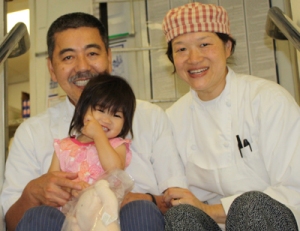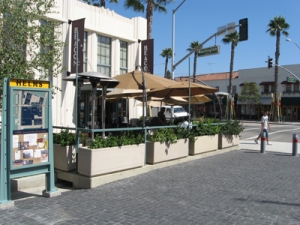 Restaurateur Profile: Susan Feniger
Restaurateur Profile: Susan Feniger
Co-Owner: Susan Feniger’s Street
742 No Highland Ave
Los Angeles, CA 90038
Yelp: 3.5 stars
Interview Date: Thursday, November 4, 2010
“My mom was a fantastic cook,” says Susan Feniger, co-owner of Susan Feniger’s Street restaurant. “We always had people at our house, and there were always great things in the freezer, ready to go when we had guests. Everything she did went in the freezer – cheese dreams, peanut butter chutney, bacon toast, and lady finger icebox cakes. Everything was ready so that if people just walked in there was something to serve them. I definitely picked up a lot of Mom’s traits – some people just get it – they know how to season and cook.”
“My first job was at Smith’s Cafeteria in Toledo, Ohio,” says Susan. “I fell in love with the idea of service, and was drawn to the pressure and flow of working in a food service environment. I never really thought that I would cook for a living though!” Susan went to Goddard College in Vermont to study psychology, but dropped out to live in a teepee. “I was rebellious as a kid – I wore Salvation Army clothes. My dad was not happy when I dropped out of college.”
Susan decided to try a second time, this time at Pitzer College. “I was on a tight budget, so I would figure out how many meals I could make out of one spaghetti squash,” she says. “I worked for a cabinet maker and in the cafeteria at Pitzer while I studied Psychology, Economics and Business. I was always very focused and driven.” The cafeteria manager had been a cook in the army, and after two years of having Susan in the kitchen asked why she wasn’t studying to become a chef. “It had never crossed my mind,” she says. “But I talked to my advisors and set up an independent study program with the Culinary Institute.” Susan fell in love immediately. “I was always trying to figure out what I was going to do with my life, but once I went to CIA it was a no-brainer. I never looked at my watch when I was cooking. It was just the right fit.”
 Susan describes being a chef as requiring a lot of right and left brain. “It’s also very physical work and requires focus, business knowledge and a little bit of therapy,” she says. “The restaurant business is all about the people, the community, the relationships with customers, with employees. That is the most important part – how you treat people. The vibe of the restaurant comes from the people who own the restaurant. It’s very natural for me – I like people, I like learning about how they are. I like the physical aspect of being in the kitchen. I like the pressure, the coordination.”
Susan describes being a chef as requiring a lot of right and left brain. “It’s also very physical work and requires focus, business knowledge and a little bit of therapy,” she says. “The restaurant business is all about the people, the community, the relationships with customers, with employees. That is the most important part – how you treat people. The vibe of the restaurant comes from the people who own the restaurant. It’s very natural for me – I like people, I like learning about how they are. I like the physical aspect of being in the kitchen. I like the pressure, the coordination.”
After working in numerous kitchens and building Border Grill with Mary Sue Miliken, Susan was looking for a fresh opportunity to build a new restaurant. “I love Border Grill and everything that we have built,” says Susan. “With Street I was just looking to do something small and on my own.” She partnered with Executive Chef Kajsa Alger and the two got to work on building all of the elements of Street. “Kajsa worked at Border Grill for 20 years, and now she’s a powerhouse. I love seeing people develop and grow. When you’re building a restaurant, everything is important – we wanted the food to be right, but also the aesthetics. The tables are made from recycled paper, and the soap in the bathroom is recycled from our cooking oil. We had the muralist from Border Grill create a different style here, and we create customized music mixes with music from everywhere – Ethiopia, New Orleans, France.” The restaurant opened in March 2009.
In balancing her time, Susan says that she goes wherever there is the greatest need. “We have an extremely strong team at Border Grill that keeps things running really smoothly. Of course, when you open a new restaurant it takes more time, but I’m involved in both businesses.”
“I work a ton – at least 14 hours per day five days per week and one eight-hour day per week. I try to take one day per week off, but it’s hard,” says Susan. “I haven’t taken a vacation for about three years, but this is how I like to spend my time. I want to see it all grow, and I absolutely love what I do. Sometimes I struggle with the idea of ‘do I have enough free time?’, but I’m also sure that I’m doing exactly what I want to be doing.”


















